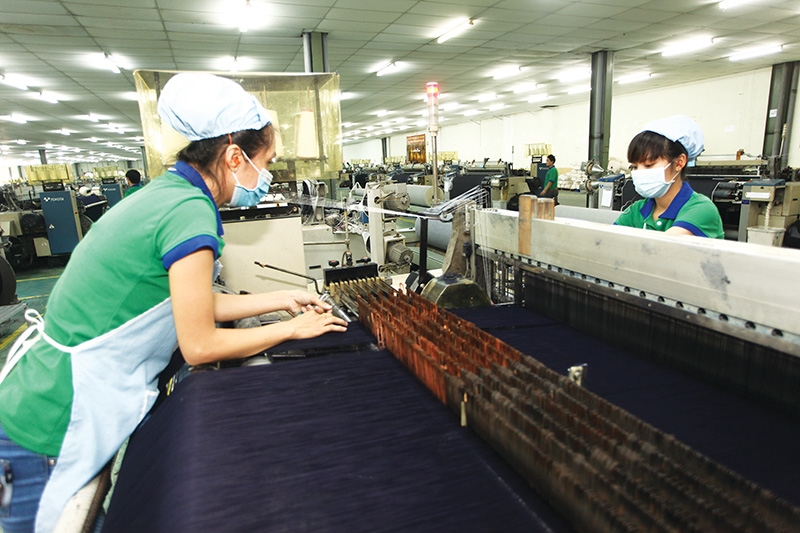Bilateral trade with China on the increase
 |
| While trade with China is increasing steadily, industry insiders advise to keep an eye on the trade deficit. Photo: Le Toan |
E-commerce platform Tmall Global will open up new export opportunities for Vietnam to China. Francis Chow, business development manager of Tmall, said that the e-commerce platform allows businesses and brands across the world to participate in both business-to-business and business-to-consumer models. After two weeks of registration, Tmall’s consulting team in Hangzhou will directly advise and monitor the registration process of businesses.
The General Department of Vietnam Customs recorded an increase in bilateral trade turnover from more than $30 million in 1991 to $22.5 billion in 2009, $133.09 billion in 2020, and $77.8 billion in the first six months of this year.
Vietnam became China’s sixth-largest trading partner in 2020, up two places compared to 2019. Meanwhile, Vietnam is the eighth-largest commodity supply market and the fifth-largest export market of China, according to statistics from China Customs.
Bui Thi Minh Nguyet, professor at the Vietnam National University of Forestry, found that China accounts for a large proportion of Vietnam’s total trade, much more than other markets such as Japan, the United States, South Korea, and ASEAN countries. In addition, Chinese goods have attractive designs, competitive prices, and low shipping costs. Therefore clothes, toys, fruit, and other food have flooded the Vietnamese market.
Vietnam is rich in natural resources with a lower level of industrialisation than China. Thus, Vietnam exports more resources and raw and semi-processed goods to China, which manufactures competitive finished products. As a result, Vietnam’s industrial production could be shrinking because it is closely tied to the export of resources and goods with low technical content.
In addition, analysts also said that when the Regional Comprehensive Economic Partnership (RCEP) comes into effect, it will likely exacerbate Vietnam’s trade deficit from China.
Luong Hoang Thai, director of the Multilateral Trade Policy Department under the Ministry of Industry and Trade, believed that the rate of tariff liberalisation that Vietnam has committed to China within the RCEP is not higher than that of the ASEAN-China Free Trade Area agreement. Therefore, the implementation of the RCEP likely does not create new competitive pressure and increases the commitment to open the market with Vietnam.
The RCEP with 15 members including China will create a large market with 2.2 billion consumers, about 30 per cent of the world’s population.
According to Thai, enterprises will only have to use one rule of origin instead of five separate sets of rules of origin in previous agreements. Similarly, rules on customs procedures and trade facilitation have been unified and strengthened.
For many years, ministries and businesses have been trying to reduce the trade deficit from China but have not been successful. Experts said that the pandemic could be an opportunity for Vietnam to break through when the supply chain from China is broken, thereby reducing the trade deficit. Vietnam may need to further improve its competitiveness through a specific roadmap. Through this, it could enhance efficiency of trade activities between Vietnam and China.
What the stars mean:
★ Poor ★ ★ Promising ★★★ Good ★★★★ Very good ★★★★★ Exceptional
Related Contents
Latest News
More News
- 72 nations sign landmark Hanoi cybercrime convention (October 26, 2025 | 18:00)
- UN Secretary-General commends Vietnam’s global leadership (October 26, 2025 | 09:00)
- APEC finance ministers convene to tackle regional challenges (October 22, 2025 | 17:31)
- Rewiring global trade: ASEAN’s rise as supply chain hub (October 17, 2025 | 11:40)
- Vietnam attends first World Nuclear Week Forum in Russia (September 26, 2025 | 10:50)
- Vietnam attends 69th session of IAEA General Conference (September 16, 2025 | 10:00)
- ADB, WB pledge over 12 billion USD for ASEAN power grid, renewable energy projects (August 15, 2025 | 14:18)
- Lowy Institute proposes AI-based tobacco control solutions for ASEAN (August 15, 2025 | 14:14)
- Cloud computing policy to position Malaysia as regional hub by 2030 (August 15, 2025 | 14:11)
- Thailand, Cambodia suffer numerous cyber attacks (August 05, 2025 | 16:19)

 Tag:
Tag:





















 Mobile Version
Mobile Version